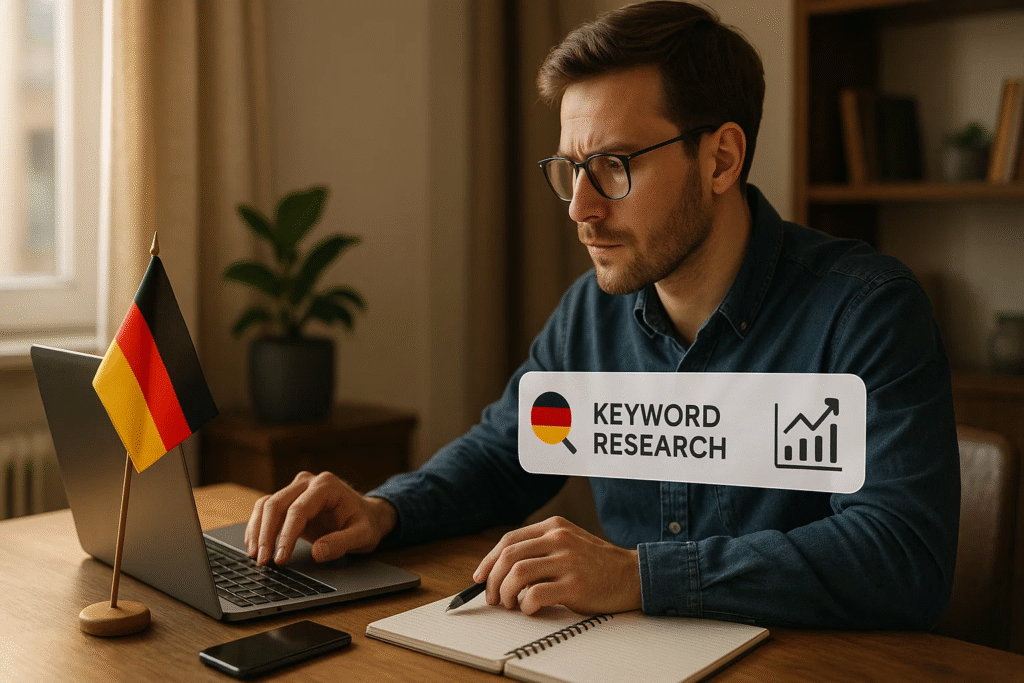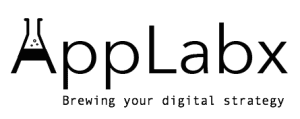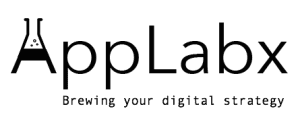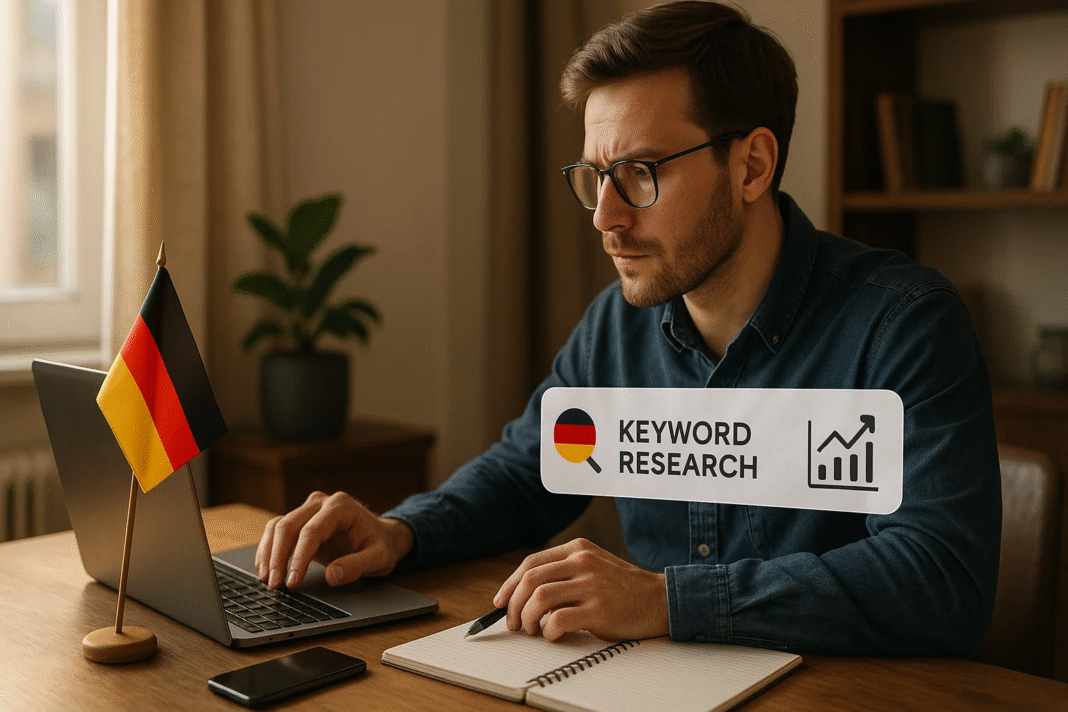Key Takeaways
- Understand German linguistic nuances like compound nouns and regional dialects to target keywords accurately.
- Leverage localized tools and SERP analysis for effective competitor insights and keyword clustering.
- Implement intent-driven content mapping and local SEO strategies to maximize visibility and conversions in Germany.
In today’s competitive digital landscape, mastering keyword research is the foundation of any successful SEO strategy. While the core principles of keyword targeting apply globally, the nuances of regional markets—such as Germany—demand a highly localized and strategic approach. Germany, as the largest economy in Europe and one of the most digitally advanced nations in the world, presents a unique and highly valuable opportunity for marketers aiming to capture German-speaking audiences. However, unlocking the full potential of SEO in Germany requires a deep understanding of linguistic, cultural, and search behavior differences that distinctly shape how users interact with search engines.

Keyword research for the German market isn’t simply about translating English phrases into German. It’s about understanding how native users search, what vocabulary they prefer, and how regional dialects and cultural context influence query patterns. German is a complex language filled with compound words, formal grammar structures, and localized phrases that don’t always have direct English equivalents. For example, a user in Munich searching for health insurance might type “private Krankenversicherung Vergleich” instead of a literal translation like “private health insurance comparison.” This small but critical distinction highlights why localized keyword research is essential for ranking well in German SERPs.
Moreover, Germany’s search engine ecosystem, while still dominated by Google.de, also includes notable traction from privacy-focused alternatives like DuckDuckGo and eco-conscious search engines like Ecosia. Understanding the algorithmic behavior and user demographics of these alternative platforms can offer additional visibility and traffic opportunities—especially for brands that align with environmental values or privacy-first messaging.
The competitive landscape in Germany is equally sophisticated. German consumers are known for conducting thorough research before making purchasing decisions, making it imperative for businesses to optimize for every stage of the buyer’s journey. Whether it’s through informational blog content, comparison pages, or localized landing pages, aligning your SEO efforts with authentic German search intent is crucial to building trust and capturing market share.
In this comprehensive guide, we will walk you through everything you need to know about keyword research specifically for the German market. From understanding user intent and regional linguistics to choosing the right tools and deploying actionable strategies, this blog will serve as a roadmap to building a powerful SEO presence in Germany. You’ll learn how to:
- Decode the digital search behavior of German users
- Use top global and German-specific keyword research tools effectively
- Navigate challenges such as compound nouns, grammar rules, and formal vs informal tone
- Build localized keyword clusters that align with Germany’s regional diversity
- Avoid common mistakes like over-relying on direct translations or generic keyword lists
Whether you’re an international brand expanding into Germany, a local business competing in a crowded niche, or a digital marketer fine-tuning your multilingual SEO strategy, this guide will equip you with the insights and tools needed to dominate German-language SERPs in 2025 and beyond.
Get ready to explore a market where precision matters, user expectations are high, and quality content—fueled by smart keyword planning—can make or break your visibility. Welcome to the world of German keyword research.
But, before we venture further, we like to share who we are and what we do.
About AppLabx
From developing a solid marketing plan to creating compelling content, optimizing for search engines, leveraging social media, and utilizing paid advertising, AppLabx offers a comprehensive suite of digital marketing services designed to drive growth and profitability for your business.
At AppLabx, we understand that no two businesses are alike. That’s why we take a personalized approach to every project, working closely with our clients to understand their unique needs and goals, and developing customized strategies to help them achieve success.
If you need a digital consultation, then send in an inquiry here.
Mastering German Keyword Research: Tools & Strategies for the German Market
- Understanding the German Digital Landscape
- Core Principles of German Keyword Research
- Best Keyword Research Tools for the German Market
- Winning Strategies for German Keyword Research
- Local SEO & Regional Keyword Targeting in Germany
- Keyword Clustering and Content Mapping in German
- Common Mistakes in German Keyword Research
1. Understanding the German Digital Landscape
To succeed in German keyword research, it’s essential to understand the digital landscape that shapes user behavior, search trends, and content consumption in Germany. This section provides a deep dive into search engine preferences, device usage trends, linguistic nuances, and regional behavior patterns—each playing a crucial role in shaping effective SEO strategies.
Search Engine Market Share in Germany (2025)
While Google.de remains the dominant search engine in Germany, the presence of alternative search platforms continues to grow. Marketers should tailor keyword research efforts based on where their audience is searching.
2025 Search Engine Usage Stats: Germany
| Search Engine | Market Share (%) | Notable Features |
|---|---|---|
| Google.de | 89.4% | Localized SERPs, Google Maps integration |
| Bing (Germany) | 5.3% | Integrated into Windows, B2B audience |
| Ecosia | 2.1% | Eco-conscious users, based in Berlin |
| DuckDuckGo (DE) | 1.8% | Privacy-focused audience |
| Yahoo | 0.6% | Older demographic usage |
| Others (Qwant, etc.) | 0.8% | Niche user base |
Key Takeaways:
- Google.de optimization is non-negotiable, but complementary efforts on Bing and Ecosia can diversify traffic.
- Ecosia and DuckDuckGo present unique brand alignment opportunities for green and privacy-centric businesses.
Device Usage and User Behavior
Understanding how Germans access the web can influence keyword strategy, especially when optimizing for mobile search and voice queries.
Device Split for Search in Germany (2025)
| Device Type | Usage Percentage | Implications for SEO |
|---|---|---|
| Mobile | 63% | Prioritize mobile-first indexing, short queries |
| Desktop | 32% | Important for B2B and research-heavy topics |
| Tablet | 5% | Design for responsive UX, especially for ecommerce |
User Behavior Insights:
- Mobile users are more likely to search for local services, e.g., “Italienisches Restaurant in Köln in meiner Nähe”
- Desktop users often engage in long-form content, product comparisons, or B2B research.
- Voice search adoption is growing, requiring natural, conversational keywords like “Was ist die beste private Krankenversicherung?”
Language Nuances & Keyword Complexity
German is a linguistically rich and complex language that directly affects how keywords are structured, searched, and interpreted by algorithms.
Unique Aspects of German Language in SEO:
- Compound Words:
- e.g., Krankenversicherung, Reiseversicherung Vergleich, Autoversicherung günstig
- These should be treated as single keyword units in tools and analysis.
- Gender and Formality:
- Gender-specific nouns (e.g., Lehrer vs. Lehrerin) may require keyword variation.
- Addressing users formally (Sie) vs. informally (du) affects click-through and content tone.
- Word Order and Syntax:
- e.g., beste SEO Agentur Berlin vs. Berlin SEO Agentur
- German users often reverse word order in queries, so both variants should be included in keyword sets.
Examples of Keyword Variants by Syntax and Formality:
| Intent | Informal Query | Formal Query |
|---|---|---|
| Find an agency | “beste SEO Agentur Berlin” | “SEO Dienstleister in Berlin finden” |
| Compare health plans | “günstige Krankenversicherung” | “Vergleich private Krankenversicherung Deutschland” |
| Contact a service | “Wie erreiche ich einen Anwalt?” | “Rechtsanwalt kontaktieren Berlin” |
Optimization Tip: Use keyword clustering to group variants with similar intent but different phrasing.
Regional and Local Search Behavior
Germany’s regional diversity affects how users search, especially when it comes to dialects, place names, and location-specific services.
Local SEO Must-Consider Factors:
- Regional Variations in Search Terms:
- e.g., Semmel (Bavaria) vs. Brötchen (Berlin) for “bread roll”
- Rechtsanwalt Hamburg vs. Anwalt in München
- Localized Search Volume Differences:
- Even within the same niche, search intent can shift dramatically by region.
Sample Regional Keyword Comparison (2025)
| Keyword | Berlin (Monthly SV) | Munich (Monthly SV) |
|---|---|---|
| “IT Jobs Berlin” | 12,000 | 3,500 |
| “SEO Agentur Berlin” | 1,900 | 880 |
| “Energieversorger wechseln Bayern” | 400 | 2,100 |
Optimization Strategy:
- Create city-specific landing pages or blog posts targeting exact phrases used in that region.
- Use tools like Google Trends Germany and Ahrefs Keyword Explorer with geo-filters.
Digital Penetration & Demographics
Understanding who is searching in Germany helps tailor content and keyword complexity.
Digital User Profile in Germany (2025)
| Demographic | Digital Behavior Highlights |
|---|---|
| 18–24 | Heavy mobile use, trend-driven, influencer-influenced |
| 25–44 | Ecommerce and service research, brand-sensitive |
| 45–64 | High-value conversions, reviews-focused |
| 65+ | Slower adoption, prefers desktop, large-font UX design |
Practical Implications:
- For younger users: Focus on short-tail, mobile keywords, e.g., “schnelle Lieferung Sneaker”
- For older users: Use clear CTAs, formal tone, and trust-building keywords, e.g., “zuverlässiger Zahnarzt in Berlin”
Conclusion: Aligning Keyword Research with the German Digital Ecosystem
Germany’s digital environment is sophisticated, regionalized, and shaped by language intricacies. Any SEO strategy must start with:
- Prioritizing Google.de while leveraging Bing, Ecosia, and DuckDuckGo where relevant.
- Understanding compound nouns, grammar, and regional vernacular.
- Segmenting your keyword targeting by device type, location, and user demographic.
By grounding keyword research in the realities of how Germans search online, brands can create highly relevant content that performs well both in rankings and in user engagement.
2. Core Principles of German Keyword Research
Effective keyword research for the German market demands more than direct translation. It requires understanding cultural context, linguistic precision, user intent, and the structural complexity of the German language. This section explores the foundational principles that differentiate successful German keyword strategies from generic or translated campaigns.
User Intent in the German Context
Understanding what users actually want when they type a query is at the core of every high-performing SEO campaign. In Germany, user intent often combines thorough research with high expectations for detail and accuracy.
Types of Search Intent:
- Informational:
- Examples: “Wie funktioniert Photovoltaik?”, “Beste Zahnpasta Stiftung Warentest”
- Users want answers, guides, definitions, or explanations.
- Navigational:
- Examples: “IKEA Deutschland Webseite”, “Sparkasse Online Banking Login”
- The user is trying to find a specific site or brand.
- Transactional:
- Examples: “Sneaker online kaufen”, “Versicherung vergleichen München”
- User is ready to make a purchase or complete a conversion.
Search Intent Matrix (Germany, 2025)
| Query Type | Example Keyword | Typical SERP Features | Content Strategy |
|---|---|---|---|
| Informational | “Wie funktioniert Wärmepumpe?” | Featured Snippets, FAQs | Blog posts, guides, definitions |
| Navigational | “Telekom Kundenservice” | Site links, Maps, login pages | Brand landing pages |
| Transactional | “Laptop kaufen günstig” | Shopping ads, product pages | Ecommerce product/category pages |
| Local/Commercial | “Zahnarzt Hamburg Bewertungen” | Maps Pack, local listings | Local landing pages, reviews |
Optimization Strategy:
- Map keywords to different stages of the funnel.
- Use structured data (FAQ, How-To, Reviews) to enhance SERP visibility.
Compound Nouns and German Keyword Structure
German’s compound word structure presents both a challenge and an opportunity. Understanding how to identify and use compound nouns is critical for both keyword discovery and on-page SEO.
Examples of Compound Keywords:
- Krankenversicherung = Health Insurance
- Autoversicherung Vergleich = Car Insurance Comparison
- Hausbaufinanzierung Rechner = Home Construction Loan Calculator
Challenges:
- Many keyword tools struggle with parsing long compound words.
- Breaking apart or misspelling compounds can misalign search intent.
Keyword Parsing Comparison Table:
| Keyword | Tool Interpretation (Good) | Tool Interpretation (Bad) |
|---|---|---|
| “Krankenversicherungsvergleich” | Correct full term | Split into unrelated terms |
| “Ferienhausvermietung Ostsee” | Context-aware search term | Over-segmented words |
| “Gebrauchtwagenbewertung online” | Proper compound recognition | Ignored long-tail potential |
Optimization Tips:
- Use tools like Sistrix, Seobility, and Google Suggest that support compound handling.
- Include both compound forms and their fragmented variants where appropriate in content.
Word Order and Syntactical Flexibility
In German, word order is more flexible than in English. This directly impacts how people search and how search engines interpret queries.
Examples of Word Order Variants:
- SEO Agentur Berlin vs. Berlin SEO Agentur
- günstiger Versicherung Vergleich vs. Versicherung günstig vergleichen
Best Practices:
- Target multiple permutations of high-volume queries.
- Use LSI (Latent Semantic Indexing) to support keyword clusters.
- Optimize headers and content with both natural and common query variations.
Word Order Optimization Chart:
| Query Variant A | Monthly Search Volume | Query Variant B | Monthly Search Volume |
|---|---|---|---|
| “SEO Agentur Berlin” | 1,900 | “Berlin SEO Agentur” | 720 |
| “Versicherung vergleichen” | 4,800 | “Vergleich Versicherung” | 1,500 |
| “günstiger Stromanbieter” | 3,600 | “Stromanbieter günstig” | 2,100 |
Strategy:
Incorporate all variations naturally in headings, image alt-text, and FAQs to cover full intent and query types.
Keyword Match Types and Local Grammar Implications
German grammar introduces additional complexity with declensions, gender, and plurality, all of which affect how people phrase search queries.
Common Grammar-Based Variants:
- Rechtsanwalt (singular) vs. Rechtsanwälte (plural)
- Haus (nominative) vs. Hauses (genitive)
- beste SEO Agentur (feminine) vs. bestes SEO Unternehmen (neuter)
Example Grammar-Based Keyword Matrix:
| Root Keyword | Variant 1 | Variant 2 | Intent Type |
|---|---|---|---|
| Rechtsanwalt | “guter Rechtsanwalt Berlin” | “beste Rechtsanwälte Berlin” | Transactional |
| Hausversicherung | “günstige Hausversicherung” | “Hausversicherungen vergleichen” | Transactional |
| Zahnarzt | “Zahnarztpraxis Hamburg” | “beste Zahnärzte in Hamburg” | Navigational/Local |
Optimization Strategy:
- Monitor singular/plural and case-sensitive versions of keywords.
- Build keyword groups by grammatical variants for complete topic coverage.
Synonyms, Dialects, and Regional Word Preferences
German is spoken across multiple countries and regions, and even within Germany, local variations in word usage can impact search volume.
Dialect Variations:
- Brötchen (Northern Germany) vs. Semmel (Bavaria)
- Kartoffel vs. Erdapfel (Austrian usage)
- Fahrrad vs. Velo (Switzerland)
Keyword Localization Table:
| Concept | Standard German | Bavarian/Austrian Variant | Swiss Variant | Usage Area |
|---|---|---|---|---|
| Bread Roll | Brötchen | Semmel | Weggli | DE-North, DE-South, CH |
| Bicycle | Fahrrad | Rad | Velo | DE, AT, CH |
| Receipt | Quittung | Beleg | Kassenzettel | DE-wide |
Strategy:
- Use Google Trends to compare regional term popularity.
- Create localized landing pages or add regional variants in keyword metadata.
Search Volume vs. Competition Balance
When conducting German keyword research, balancing high search volume against manageable competition is crucial for visibility.
Search Opportunity Matrix:
| Keyword Difficulty | High Volume | Low Volume |
|---|---|---|
| High Competition | Versicherung vergleichen | SEO Beratung |
| Low Competition | Notfall Zahnarzt Dresden | Photovoltaik Förderung Brandenburg |
Strategy Tips:
- Use long-tail regional queries for faster wins.
- Balance short-tail head terms with informational modifiers (e.g., “2025”, “Test”, “Bewertung”).
Conclusion: Build Keyword Research on Local Relevance and Linguistic Precision
The German keyword landscape is defined by structural complexity, regional diversity, and user expectation for high-quality information. Core principles to always apply include:
- Prioritize search intent mapping before selecting terms.
- Embrace compound word targeting and syntactical flexibility.
- Account for grammar, dialects, and regional terms in keyword clusters.
- Leverage tools that understand and support the linguistic structure of German.
Incorporating these principles into your keyword research methodology will enable your content to rank, resonate, and convert effectively in the German-speaking market.
3. Best Keyword Research Tools for the German Market
Keyword research in Germany presents unique challenges due to linguistic complexity, compound nouns, regional dialects, and localized intent. Using the right tools—those that support German language parsing, regional SERP analysis, and cultural context—is essential for crafting SEO strategies that perform well in German-speaking regions.
This section explores the most effective keyword research tools tailored for the German market, categorized by global tools with German support and Germany-native platforms. Each tool is evaluated based on feature set, local accuracy, use case, and pricing flexibility.
Global Tools with Strong German Market Support
These widely used international SEO platforms have robust German databases, language support, and features tailored for multilingual SEO.
1. Google Keyword Planner (Germany)
- Free tool within Google Ads interface
- Strong native support for .de domains and local search volumes
- Ideal for PPC planning and initial keyword discovery
Key Features:
- Keyword ideas based on German-language seed terms
- Filters for location (Germany, Austria, Switzerland)
- CPC estimates and competition level in German markets
Example Output:
- Input: “Hausratversicherung”
- Suggestions: “Hausratversicherung Vergleich”, “beste Hausratversicherung 2025”, “günstige Hausratversicherung Testsieger”
Limitations:
- Broad volume ranges (e.g., 1K–10K)
- Focused more on paid search than organic SEO
2. SEMrush
- Comprehensive SEO suite with advanced keyword research features
- Full support for .de, .at, .ch domains
Key Tools:
- Keyword Magic Tool: Provides suggestions in German with intent and SERP analysis
- Keyword Gap Tool: Competitor keyword comparison for Germany
- Position Tracking: Rank monitoring on Google.de
Example Use Case:
- Track performance of “Rechtsanwalt Berlin” vs. competitor domains like anwalt.de or rechtsanwalt24.de
Strengths:
- Accurate German search volume
- SERP feature tracking (Featured Snippets, People Also Ask in German)
Weaknesses:
- Higher pricing may deter small businesses
3. Ahrefs
- Known for backlink intelligence but also strong in German keyword analysis
German Support Highlights:
- Extensive .de keyword database
- SERP overview of top-ranking German pages
- Keyword Difficulty scoring tailored to the local SERP
Example Data Output:
- Keyword: “Solaranlage Förderung 2025”
- Search Volume: 5,400
- KD: 17
- Top SERP: solaranlagen-portal.de, energie-experten.org
Bonus:
- Identify German question-based queries for FAQ content (e.g., “Was kostet eine Solaranlage?”)
4. Ubersuggest (Neil Patel)
- Freemium tool with simplified UI and German keyword support
Best For:
- Beginners and startups entering the German SEO space
- Quick long-tail keyword suggestions
Use Case Example:
- Input: “Autoversicherung”
- Related Suggestions: “billige Autoversicherung”, “beste Autoversicherung Deutschland”, “KFZ Versicherung Vergleich”
Limitations:
- Less granular than Ahrefs or SEMrush
- Lacks in-depth SERP features and competitor analysis
5. Mangools (KWFinder)
- Lightweight, user-friendly keyword tool with accurate German data
Features:
- Germany-specific keyword volume and CPC
- SERP preview for Google.de
- Keyword difficulty metrics based on German competition
Comparison Snapshot:
| Feature | Mangools (KWFinder) | Google Keyword Planner |
|---|---|---|
| Local SERP preview | Yes | No |
| Keyword difficulty score | Yes | No |
| User interface | Intuitive | Complex (Ad-focused) |
Good for: Bloggers, freelancers, and mid-size agencies targeting .de markets
Germany-Specific Keyword Research Tools
These tools are either developed in Germany or specifically tailored for German-speaking audiences. They excel at parsing compound nouns, understanding search intent in German, and integrating with local SEO environments.
1. Sistrix
- One of Germany’s most trusted SEO platforms
- Built specifically for .de, .at, .ch markets
Tool Modules:
- Keyword Discovery (German language by default)
- Visibility Index for .de domains
- Competitive gap analysis with regional filters
Example Application:
- Identify lost keywords after a Google core update on a German ecommerce site
Strengths:
- Weekly visibility tracking for German SERPs
- Clear keyword trend visualizations
2. Seobility
- Full-featured German SEO suite with free and paid plans
Why It’s Effective for Keyword Research:
- Integrates keyword audit with on-page SEO checker
- Country-specific volume and CPC in German
Useful Features:
- SEO check for content in German grammar and structure
- Google.de ranking monitor
Target Users:
- SMEs, consultants, and German-language content marketers
3. XOVI
- Enterprise-grade German SEO platform
- Powerful for tracking large-scale projects in Germany
Key Highlights:
- Research keywords by city or Bundesland
- Social signals combined with SEO visibility
Application Example:
- Optimize for “Fitnessstudio München Vergleich” and track visibility in Bavaria
Strengths:
- Extensive competitive data
- Integration with affiliate networks and analytics tools
4. Searchmetrics Essentials (Germany Edition)
- Focused on performance-driven SEO for enterprise users
Benefits:
- Industry-specific keyword analysis (e.g., insurance, ecommerce, automotive)
- Predictive keyword analysis in German
Ideal For:
- Agencies and corporations needing granular search insights in German-speaking markets
Feature Comparison Table: Global vs. German-Specific Tools
| Tool | German Language Parsing | SERP Preview | Local Volume Accuracy | Keyword Difficulty | Local Competitor Analysis | Pricing Tier |
|---|---|---|---|---|---|---|
| Google KWP | Moderate | No | Medium | No | Low | Free |
| SEMrush | Excellent | Yes | High | Yes | Strong | Premium |
| Ahrefs | Very Good | Yes | High | Yes | Good | Premium |
| Mangools | Good | Yes | High | Yes | Moderate | Mid-range |
| Sistrix | Excellent | Yes | Very High | Yes | Excellent | Premium (EU-based) |
| Seobility | Good | Yes | High | Yes | Moderate | Free/Paid |
| XOVI | Excellent | Yes | Very High | Yes | Excellent | Premium |
Tool Selection Guide: Choosing Based on Use Case
| Use Case | Recommended Tools |
|---|---|
| Beginners & Startups | Ubersuggest, Seobility |
| Local SEO Campaigns | Mangools, Sistrix, XOVI |
| Enterprise/Agency Projects | SEMrush, Ahrefs, Searchmetrics |
| E-commerce in Germany | Ahrefs, XOVI, Sistrix |
| Content-Driven SEO & Blogging | KWFinder, Seobility |
| Competitor Benchmarking in Germany | SEMrush, Sistrix, Searchmetrics |
Conclusion: Empowering Your German SEO with the Right Tools
The success of any SEO campaign targeting Germany hinges on the precision and cultural adaptability of your keyword research. With tools like Sistrix and Seobility offering localized intelligence and global platforms like SEMrush and Ahrefs supporting German data natively, marketers are better equipped than ever to build relevant, data-driven keyword strategies.
When selecting tools:
- Always prioritize support for German linguistic structures (compound nouns, formal grammar).
- Evaluate local volume accuracy and SERP preview capabilities.
- Use a hybrid toolkit—global + German-native—for comprehensive research coverage.
4. Winning Strategies for German Keyword Research
Developing an effective keyword strategy for the German market involves far more than generating a list of high-volume terms. Success depends on understanding cultural nuances, aligning with local search behavior, leveraging intent-driven keyword groupings, and optimizing content around regional and linguistic structures. This section outlines actionable, data-backed strategies to help digital marketers dominate the German SERPs in 2025 and beyond.
Leveraging Google.de SERP Features for Insightful Keyword Discovery
The structure of the Google.de search results page offers valuable clues about user behavior and intent. Strategically analyzing these SERP features can unlock new keyword opportunities and shape your content strategy.
Tactics for Google SERP Mining:
- Use German language queries in Google Autocomplete to identify trending search terms
- Extract long-tail suggestions from “Ähnliche Suchanfragen” (Related Searches) at the bottom of the results page
- Analyze Featured Snippets and “Nutzer fragten auch” (People Also Ask) to identify FAQ-style content queries
Example:
- Seed Term: “Krankenversicherung wechseln”
- Google Suggest Variants:
- “Krankenversicherung wechseln bei Arbeitslosigkeit”
- “Private Krankenversicherung wechseln Voraussetzungen”
- Related Searches:
- “Beste Krankenversicherung 2025 Deutschland”
- “Vergleich gesetzliche und private Krankenversicherung”
- Google Suggest Variants:
SERP Feature Mapping Table
| SERP Feature (DE) | Example Keyword | Content Format to Target |
|---|---|---|
| Featured Snippet | “Wie funktioniert Photovoltaik?” | Structured blog answer, schema |
| People Also Ask (Nutzer fragen) | “Welche Krankenversicherung ist die beste?” | FAQ schema, answer box |
| Local Map Pack | “Zahnarzt Berlin Prenzlauer Berg” | Google My Business, local SEO |
| Video Carousel | “Bewerbungsgespräch Tipps” | YouTube SEO, video content |
Strategy:
Target all visible SERP real estate by creating content for each feature, especially FAQ-rich queries and local intent pages.
Performing Competitor Keyword Analysis in German SERPs
Reverse-engineering your top-performing competitors can reveal high-conversion keywords and untapped long-tail opportunities.
Steps to Follow:
- Use SEMrush, Sistrix, or Ahrefs to analyze .de domains
- Identify keyword gaps between your site and 2–3 local competitors
- Extract top-ranking keywords and segment by intent and URL type
Example Competitor Audit:
| Competitor | Target Keyword | Ranking Page | Monthly Volume |
|---|---|---|---|
| anwalt.de | “Rechtsanwalt Berlin” | /berlin/rechtsanwalt | 3,800 |
| check24.de | “Hausratversicherung Vergleich” | /versicherung/hausratversicherung | 5,100 |
| idealo.de | “Handy ohne Vertrag kaufen” | /preise/Handy-ohne-Vertrag | 9,700 |
Best Practices:
- Focus on keywords driving traffic to category-level and service pages
- Use SERP overview to assess the ranking difficulty and content types
Building German Keyword Clusters Around Search Intent
Keyword clustering is critical in German SEO due to the language’s word order variations, compound structure, and grammar. Creating thematic clusters improves topical authority and enhances content discoverability.
Clustering Dimensions:
- Primary Topic: Core keyword (e.g., Hausbaufinanzierung)
- Long-Tail Modifiers: Region, year, transaction intent (e.g., Hausbaufinanzierung 2025 Bayern vergleichen)
- Synonyms: Immobilienkredit, Baufinanzierung, Hypothekendarlehen
German Keyword Cluster Example: “Hausbaufinanzierung”
| Cluster Level | Example Keywords | Content Target |
|---|---|---|
| Primary Keyword | “Hausbaufinanzierung” | Pillar/Service Page |
| Informational | “Wie funktioniert eine Hausbaufinanzierung?” | Blog Guide / FAQ Page |
| Regional/Local | “Hausbaufinanzierung Bayern 2025” | Local Landing Page |
| Comparative | “Baufinanzierung Vergleich Sparkasse und Volksbank” | Comparison Blog / Table Section |
| Transactional | “Hausbaukredit online beantragen” | Lead Form / Conversion Page |
Strategy:
Interlink each cluster page to boost internal authority and ensure semantic alignment with Google’s entity-based ranking models.
Combining Short-Tail and Long-Tail Keywords for Balanced Reach
In the German SEO environment, short-tail keywords provide visibility, but long-tail keywords often drive qualified traffic with higher conversion potential.
Short-Tail vs. Long-Tail Keyword Matrix
| Type | Keyword Example | Search Volume | Conversion Potential | Competition |
|---|---|---|---|---|
| Short-Tail | “Stromanbieter” | 45,000 | Low | High |
| Long-Tail | “günstiger Stromanbieter München 2025” | 1,300 | High | Low-Medium |
| Long-Tail | “Stromanbieter wechseln mit Bonus” | 1,000 | High | Medium |
Optimization Tips:
- Use short-tail keywords in homepage titles and core service pages
- Target long-tail variants in supporting content, like blogs, FAQs, and regional landing pages
Exploiting Regional and Local Keyword Opportunities
Given Germany’s strong regional identity, location-specific keywords significantly improve local discoverability and relevance.
Tactics:
- Use Google Trends (Germany) to compare regional keyword demand
- Include local modifiers (city, region, postal code) in page titles and metadata
- Leverage Google My Business and local directories to reinforce geo-signals
Regional Keyword Demand Chart
| Keyword | Berlin Volume | Munich Volume | Hamburg Volume |
|---|---|---|---|
| “Immobilienmakler + Stadt” | 5,400 | 2,800 | 2,500 |
| “Zahnarzt Notdienst + Stadt” | 3,200 | 2,700 | 2,100 |
| “SEO Agentur + Stadt” | 1,900 | 880 | 1,000 |
Implementation:
- Create individual landing pages for major cities and Bundesländer
- Include regionally tailored copy, testimonials, and dialect-sensitive language if relevant
Using Year Modifiers & Seasonal Trends
German search behavior reflects seasonal demand patterns and year-specific searches, particularly in sectors like insurance, finance, and ecommerce.
Examples:
- “KFZ Versicherung 2025 Vergleich”
- “Günstige Weihnachtsgeschenke für Männer 2025”
- “Sommerreifen Angebote Mai 2025”
Benefits:
- Captures time-sensitive search traffic
- Positions content as current, trustworthy, and up-to-date
Trend Optimization Tips:
- Refresh content yearly with “Last Updated” tags
- Use tools like Google Trends, Exploding Topics, and XOVI’s Keyword Planner to forecast interest
Tracking Keyword Performance and Iterating Regularly
Keyword strategies must evolve with changes in algorithm updates, user behavior, and market competition. Consistent tracking and data analysis are essential.
Monitoring Tools:
- SEMrush – Daily rank tracking on Google.de
- Sistrix Visibility Index – Weekly keyword performance snapshot
- Google Search Console (German property) – CTR and impression data from .de domains
Metrics to Track:
- Keyword rankings (national and local)
- SERP feature inclusion (Featured Snippets, PAA)
- CTR and bounce rate for German-language pages
- Conversion metrics for top keywords
Conclusion: Transforming Data into Strategy for German SEO Success
Winning in the German keyword landscape requires a multi-dimensional, user-first approach that blends linguistic insight with search intent, local context, and continuous optimization. By applying the following key strategies:
- Extracting insights from Google.de SERP features
- Conducting competitor gap analysis
- Building search intent-focused keyword clusters
- Balancing short- and long-tail targeting
- Tapping into regional keyword variations
- Tracking and adapting based on live performance data
Marketers and SEO professionals can develop high-performance campaigns that not only rank well but resonate with German users at every stage of their digital journey.
5. Local SEO & Regional Keyword Targeting in Germany
Local SEO in Germany requires a strategic blend of geographic relevance, cultural understanding, and language precision. With a highly decentralized population and strong regional identities, German users often search using city-specific or even neighborhood-level modifiers. Ranking locally is not only about appearing on Google Maps — it’s about aligning with localized search intent, using regional language variants, and optimizing across multiple local directories.
This section explores advanced strategies and practical frameworks for dominating local SEO and regional keyword targeting in the German market.
Understanding Regional Search Behaviour in Germany
Germany’s federal structure and diverse regions drive a wide range of localized search behavior. People in Munich don’t search the same way as those in Berlin, Cologne, or Leipzig.
Key Local SEO Observations:
- Most local searches include city or district names, e.g. “Zahnarzt Köln Ehrenfeld”
- Regional dialects or word choices influence search volume and phrasing
- Users frequently rely on Google Maps, Google My Business, and review platforms
Top Local Intent Keywords by Category (Germany, 2025)
| Industry | Sample Local Keyword | Monthly Volume (Berlin) | Monthly Volume (Munich) |
|---|---|---|---|
| Legal Services | “Rechtsanwalt Berlin Kreuzberg” | 2,100 | 1,100 |
| Healthcare | “Zahnarzt Notdienst Berlin” | 3,500 | 2,300 |
| Home Services | “Elektriker München Schwabing” | 900 | 1,400 |
| Food & Beverage | “Italienisches Restaurant Köln Innenstadt” | 1,200 | 400 |
| Fitness & Wellness | “Yoga Studio Hamburg Altona” | 950 | 550 |
Creating Geo-Targeted Landing Pages
Developing location-specific landing pages is one of the most effective ways to rank for city- or neighborhood-based searches in Germany.
Best Practices:
- Include city name in title tag, H1, meta description, and URL
- Use localized content, including neighborhood names and landmarks
- Add embedded Google Maps and local business schema markup
- Display NLP-friendly business details: address, phone, opening hours
Example Landing Page Structure:
| Element | Example for “SEO Agentur Berlin” |
|---|---|
| Title Tag | “Top SEO Agentur in Berlin – Sichtbarkeit lokal steigern” |
| URL | /seo-agentur/berlin/ |
| H1 | “Ihre professionelle SEO Agentur in Berlin” |
| Meta Description | “Erhöhen Sie Ihre Online-Präsenz mit unserer lokalen SEO Agentur in Berlin. Jetzt kostenlose Beratung sichern.” |
| Body Content | Talk about Berlin trends, local clients, Google.de ranking examples |
Tip: Avoid duplicating content across location pages. Customize each with regional case studies or testimonials.
Optimizing Google My Business for Germany
Google My Business (now integrated into Google Business Profile) plays a central role in local SEO, especially for “near me” and mobile searches.
Essential GMB Optimizations:
- Use German-language categories, e.g., “Zahnarzt”, “Rechtsanwalt”, “Friseur”
- Maintain consistent NAP (Name, Address, Phone) details across all platforms
- Add high-quality local photos (exterior, interior, staff)
- Encourage Google Bewertungen (Reviews) with responses in formal German
GMB Ranking Factors (Germany-Specific Priorities)
| Factor | Impact | Example Action |
|---|---|---|
| Local keyword in title | High | “SEO Agentur Berlin – AppLabx GmbH” |
| Reviews with keywords | High | “Sehr professionelle SEO Agentur in Charlottenburg” |
| Proximity to searcher | Medium | Optimize for nearby districts or postal codes |
| Categories and attributes | Medium | Use native labels like “Dienstleistungen für Unternehmen” |
| Business hours accuracy | Low | Keep holiday schedule updated (e.g., Feiertage in Bayern) |
Using Local Business Directories in Germany
Apart from Google, Germany has a strong tradition of Verzeichnisse (directories) and local platforms that influence search visibility and backlinks.
Top Local German Directories:
| Directory Name | Domain | Description |
|---|---|---|
| Das Örtliche | www.dasoertliche.de | Local phone and business listings |
| Gelbe Seiten | www.gelbeseiten.de | German Yellow Pages |
| 11880 | www.11880.com | Business directory and reviews |
| GoYellow | www.goyellow.de | Business search and mapping |
| Meinestadt.de | www.meinestadt.de | Local events, services, and jobs |
Best Practices:
- Submit to top 10 directories per city
- Use identical formatting of NAP on every listing
- Monitor and update entries regularly to avoid data discrepancies
Creating Location-Based Content & Blog Posts
Publishing hyperlocal blog posts can enhance topical authority and visibility for long-tail regional queries.
Effective Content Ideas:
- “Top 10 Tipps für Zahnarztbesuche in Berlin Charlottenburg”
- “Wie finde ich eine gute SEO Agentur in Hamburg 2025?”
- “KFZ-Versicherungsvergleich für Münchner Autobesitzer 2025”
Content Calendar Framework for Regional SEO Blog:
| Month | Region Focus | Topic Example | Intent |
|---|---|---|---|
| January | Hamburg | “Steuerberater Hamburg – Was ändert sich 2025?” | Informational |
| March | Cologne | “Frühjahrsputz: Beste Reinigungsdienste in Köln 2025” | Commercial |
| June | Berlin | “Top Sommeraktivitäten für Familien in Berlin 2025” | Navigational |
| September | Munich | “Oktoberfest 2025: Wo finde ich günstige Hotels in München?” | Transactional |
Optimizing for Regional Variants and Dialects
Different parts of Germany use different terms for the same concepts. Regional vocabulary affects local keyword search volume and click behavior.
Examples of Regional Lexical Differences:
| Concept | Standard Term (High German) | Regional Variant | Region |
|---|---|---|---|
| Bread roll | Brötchen | Semmel | Bavaria, Austria |
| Potato | Kartoffel | Erdapfel | Southern Germany, Austria |
| Bicycle | Fahrrad | Velo | Switzerland |
Tactics:
- Use Google Trends Germany to compare regional term popularity
- Include regional synonyms in long-form blog posts and glossary sections
- Consider using hreflang tags if targeting Austria or Switzerland separately
Tracking Local SEO Performance in Germany
Monitoring performance at the local level ensures continual refinement of your strategy.
Recommended Tracking Tools:
- Google Business Profile Insights: Clicks, calls, direction requests
- SEMrush Position Tracker: Rank tracking by city or postal code
- Sistrix Local Visibility Index: Geo-specific ranking snapshots
- Google Search Console Filters: Country-specific impressions (Germany)
Key Metrics to Track:
| Metric | Tool Example | Importance |
|---|---|---|
| Local pack rankings | BrightLocal, SEMrush | High |
| Click-to-call actions | Google GMB Insights | High |
| Reviews and star ratings | GMB, Trustpilot | High |
| Local keyword impressions | GSC by query filter | Medium |
| Directory referral traffic | Google Analytics | Medium |
Conclusion: Mastering Local SEO in Germany Requires Regional Precision
To succeed in Germany’s highly localized search landscape, marketers must embrace:
- City- and district-level landing pages
- Culturally appropriate content and vocabulary
- Consistent directory listings and GMB optimization
- Regionally tailored blog posts and seasonal trends
A structured local SEO approach, supported by accurate data, strong geo-signals, and linguistic authenticity, will position your brand to dominate the regional SERPs in Germany’s competitive digital environment.
6. Keyword Clustering and Content Mapping in German
Keyword clustering and content mapping are critical components of an effective SEO strategy in the German-speaking market. Due to the compound nature of the German language, complex grammatical structures, and the need for linguistic precision, content must be built around tightly themed keyword groups that align with both user intent and the unique structure of German search behavior.
This section outlines how to structure keyword clusters effectively for German-language SEO and how to build comprehensive, intent-driven content maps to support authority, discoverability, and semantic coverage.
Understanding Keyword Clustering in the German Language
Keyword clustering is the process of grouping semantically related keywords to target with specific content pieces. In German, this process must account for word inflection, compound nouns, and regional variations.
Challenges Unique to German Clustering:
- Compound words often encapsulate entire phrases (e.g., “Hausratversicherung”)
- Word order changes the keyword structure (e.g., “Versicherung vergleichen” vs. “Vergleich Versicherung”)
- Pluralization, declension, and gender can produce multiple variants of the same search intent
Example: Keyword Variations for “Hausratversicherung”
| Keyword Variant | Intent Type | Notes |
|---|---|---|
| hausratversicherung | Navigational | Generic seed keyword |
| hausratversicherung test stiftung warentest | Informational | Comparison-focused search |
| hausratversicherung günstig online | Transactional | Price-sensitive buyer |
| hausratversicherung kündigen | Navigational | Service query, offboarding intent |
| beste hausratversicherung 2025 | Commercial | Product intent with yearly modifier |
Building Intent-Based Keyword Clusters
For maximum semantic reach and topical authority, organize clusters by user intent, then map sub-variants accordingly.
Cluster Framework:
- Primary Keyword: Seed term or core topic
- Informational Keywords: “Wie”, “Was”, “Wann”, “Warum” questions
- Transactional Keywords: “Kaufen”, “Vergleichen”, “Angebote”
- Navigational Keywords: Branded or service-location queries
- Local Modifiers: City, region, postcode
Sample Cluster: “Photovoltaik” (Solar Panels)
| Cluster Segment | Example Keywords | Target Page Type |
|---|---|---|
| Informational | wie funktioniert photovoltaik, photovoltaik erklären | Blog article, explainer |
| Transactional | photovoltaik anlage kaufen, photovoltaik preise | Product/service landing page |
| Local | photovoltaik firma münchen, solarfirma berlin | Regional landing pages |
| Year-based | photovoltaik förderung 2025 deutschland | Annual updates & topical content |
| Comparative | photovoltaik vs solarthermie | Comparison page or article |
Keyword Mapping to Content Types
After clustering, the next step is to assign each group to the appropriate content format and URL structure.
Mapping Matrix:
| Keyword Cluster | Content Type | URL Example |
|---|---|---|
| beste krankenversicherung 2025 | Product Comparison Page | /krankenversicherung/beste-2025 |
| rechtsanwalt berlin charlottenburg | Local Service Page | /rechtsanwalt/berlin-charlottenburg |
| wie funktioniert eine gasheizung | Informational Blog Post | /ratgeber/gasheizung-funktion |
| versicherung kündigen muster | Downloadable Template Page | /resources/versicherung-kuendigung |
| seo agentur preise | Pricing Page | /seo-agentur/preise |
Best Practices:
- Use subfolders to create semantic groupings in URL paths (e.g., /ratgeber/ for guides)
- Add internal links between related cluster pages to strengthen topical relevance
- Avoid duplicate intent by consolidating similar long-tails into cornerstone pages
Creating Topic Clusters with Pillar and Cluster Page Strategy
Topic clusters are collections of interlinked content that revolve around a central “pillar page.” In the German SEO landscape, this model is especially powerful when dealing with high-volume, competitive terms.
How to Structure a Topic Cluster:
- Pillar Page: Broad overview targeting a core keyword (e.g., “Hausbaufinanzierung”)
- Cluster Pages: In-depth subtopics targeting long-tail variants
Visual Model:
bashCopyEditPillar Page: /hausbaufinanzierung/
|
|-- /hausbaufinanzierung-rechner/
|-- /hausbaufinanzierung-ohne-eigenkapital/
|-- /hausbaufinanzierung-fuer-selbststaendige/
|-- /hausbaufinanzierung-kfw-foerderung/
|-- /hausbaufinanzierung-niedrige-zinsen-2025/
Benefits of Topic Clusters:
- Improves crawlability and site architecture
- Increases relevance signals to Google.de
- Encourages deeper user engagement
Using Keyword Clustering Tools with German Support
Several tools support German language clustering and intent analysis.
Recommended Tools:
| Tool | Features for German Clustering | Notes |
|---|---|---|
| Sistrix | German keyword database, intent-based segmentation | Native to German SEO market |
| Ahrefs | SERP overview and keyword groups | Excellent for competitive data |
| SEMrush | Keyword Magic Tool with German grouping | Supports clustering by topic |
| Keyword Cupid | AI-driven clustering with language filters | Supports German character sets |
| SE Ranking | Keyword grouping and difficulty scoring in DE | Good for smaller campaigns |
Visualizing Keyword Clusters with Content Trees
Keyword trees help map the relationship between primary and secondary queries.
Sample Tree: “KFZ Versicherung”
yamlCopyEditKFZ Versicherung
├── KFZ Versicherung Vergleich 2025
├── Günstige KFZ Versicherung für Fahranfänger
├── KFZ Versicherung ohne Schufa
├── KFZ Versicherung kündigen Vorlage
├── KFZ Versicherung Online Rechner
Each branch supports a unique intent:
- Comparison
- Price sensitivity
- Financial status relevance
- Offboarding
- Tool use
Integrating Keyword Clusters with Internal Linking Strategy
An effective German content strategy includes deliberate internal linking among cluster pages to improve topic authority and user journey flow.
Internal Linking Guidelines:
- Link long-tail cluster pages back to the pillar page
- Use contextual anchor text in German (e.g., “Erfahren Sie mehr über unseren Hausbaufinanzierung Rechner”)
- Ensure internal links reflect semantic relationships, not just navigation
Building German Content Silos by Industry
Different industries require unique silo structures and keyword clusters.
Example: Health Insurance (Krankenversicherung)
| Silo | Content Type | Example Page |
|---|---|---|
| Überblick | Pillar Page | /krankenversicherung/ |
| Private Optionen | Cluster Page | /krankenversicherung/private/ |
| Gesetzliche Kassen | Cluster Page | /krankenversicherung/gesetzlich/ |
| Vergleich 2025 | Comparison Page | /krankenversicherung/vergleich-2025/ |
| Kündigung & Wechsel | Offboarding Guide | /krankenversicherung/kuendigen/ |
Conclusion: Building Semantic Authority with German Keyword Mapping
Mastering keyword clustering and content mapping in German enables SEO professionals to:
- Cover broad topics with depth and relevance
- Improve rankings through semantic completeness
- Enhance UX with structured content journeys
- Maximize visibility by matching local language usage and search behavior
By grouping keywords around core topics and aligning them with purpose-driven content structures, digital marketers can achieve strong, scalable organic performance in Germany’s increasingly competitive search environment.
7. Common Mistakes in German Keyword Research
Conducting keyword research for the German market presents unique linguistic, cultural, and technical challenges. Without a deep understanding of German syntax, compound nouns, local variations, and intent nuances, even experienced marketers can fall into costly SEO traps. This section provides a detailed analysis of the most common keyword research mistakes in the German SEO landscape—along with examples, use-case breakdowns, and corrective strategies.
Overlooking German Compound Nouns and Language Structure
German is known for its compound nouns, where multiple words are fused into a single term. Failing to recognize these structures often leads to targeting incorrect or low-volume variants.
Mistake Patterns:
- Targeting word-by-word translations (e.g., “Haus Versicherung” instead of “Hausversicherung”)
- Ignoring compound formations users actually search (e.g., “Solaranlagenförderung” vs. “Solar Anlage Förderung”)
- Missing relevant long-tail phrases due to improper tokenization
Examples:
| Incorrect Keyword | Correct Compound Keyword | Monthly Volume (Germany) |
|---|---|---|
| solar anlage | Solaranlage | 33,000 |
| haus rat versicherung | Hausratversicherung | 49,500 |
| auto versicherung billig | günstige Autoversicherung | 14,800 |
| kredit für wohnung | Wohnkredit / Baufinanzierung | 18,700 |
Solution:
Use keyword research tools that handle German compound detection, like Sistrix or SEMrush Germany edition, and always validate the grammatical correctness of your seed terms.
Translating English Keywords Directly Without Context
Literal translations often miss user intent and regional phrasing, leading to keyword mismatch or irrelevant content targeting.
Common Translation Errors:
- Assuming 1:1 equivalence (e.g., “health insurance” → “Gesundheitsversicherung” instead of “Krankenversicherung”)
- Ignoring German user preferences for native terminology
- Overusing machine-translated keywords without linguistic validation
Translation Mismatch Table:
| English Keyword | Incorrect German Translation | Correct German Keyword | Notes |
|---|---|---|---|
| Car insurance | Auto Versicherung | Autoversicherung | Compound form is dominant |
| Health insurance | Gesundheitsversicherung | Krankenversicherung | Widely accepted local term |
| Solar system | Solarsystem | Solaranlage | Scientific vs. consumer intent |
| Lawyer Berlin | Anwalt Berlin | Rechtsanwalt Berlin | Legal term vs. general term |
Solution:
Use intent-based translation and verify search volume using German-specific keyword tools. Work with native-speaking SEO experts when entering the market.
Neglecting Regional and Dialect-Based Variants
Germany consists of 16 federal states, each with its own linguistic tendencies and regional preferences. Ignoring these nuances results in missed visibility in local searches.
Common Mistakes:
- Using national keywords for hyperlocal campaigns (e.g., “SEO Agentur Deutschland” for Berlin)
- Missing regional naming conventions (e.g., *“Semmel” vs. “Brötchen”)
- Overlooking Swiss German and Austrian German differences if targeting DACH
Regional Variance Examples:
| Standard Term | Regional Variant | Region | Use in SEO |
|---|---|---|---|
| Brötchen | Semmel | Bavaria, Austria | Use both in bakery SEO |
| Kartoffel | Erdapfel | Austria | Consider hreflang targeting |
| Fahrrad | Velo | Switzerland | For Swiss product targeting |
| Bäckerei Berlin | Backstube Berlin | Eastern Germany (colloquial) | Regional blog content |
Solution:
Use Google Trends by region, and create localized content and landing pages for major cities and dialect zones.
Ignoring Search Intent in Clustering
Grouping keywords purely by volume or topic without considering user intent results in irrelevant or underperforming content.
Error Types:
- Combining informational and transactional keywords on the same page
- Targeting “Was ist…” queries on service pages
- Ignoring long-tail purchase or comparison intent
Intent Mapping Table:
| Keyword | User Intent | Suggested Page Type |
|---|---|---|
| Was ist eine Solaranlage | Informational | Blog post or glossary page |
| Solaranlage kaufen | Transactional | Product/service landing page |
| Beste Solaranlage Deutschland Vergleich | Commercial | Comparison and review page |
| Solaranlage Förderung 2025 | Informational | Grants & government guide page |
Solution:
Segment keywords by intent and build dedicated content for each cluster. Avoid combining disparate intents in one URL.
Over-relying on Global Tools Without German Calibration
Using international tools like Ubersuggest or Google Keyword Planner without country/language filters leads to inaccurate data and misleading direction.
Common Tool-Related Errors:
- Extracting volume from Google.com instead of Google.de
- Ignoring SERP differences between English and German markets
- Relying on volume alone without competition or trend data
Comparison of Tool Output:
| Tool | Default Language | Needs Localization? | German SERP Preview | Regional Volume Support |
|---|---|---|---|---|
| Ubersuggest | English | Yes | No | Limited |
| SEMrush Germany | German | No | Yes | Strong |
| Google KWP | Varies | Yes (select .DE) | No | Moderate |
| Ahrefs | Multilingual | No (select .de) | Yes | Strong |
Solution:
Choose tools with local-language support, access to .de domains, and German-specific databases.
Focusing Only on High-Volume Keywords
Many marketers prioritize high-volume keywords without considering:
- Difficulty levels
- Conversion potential
- SERP competitiveness
- Search trends
This leads to poor ROI and missed long-tail opportunities.
Volume vs. Conversion Comparison:
| Keyword | Volume | Difficulty | Conversion Potential | Recommendation |
|---|---|---|---|---|
| Kredit | 74,000 | Very High | Low | Too generic |
| Online Kredit ohne Schufa | 12,000 | Medium | High | Better targeting |
| Kreditrechner für Selbstständige | 1,400 | Low | Very High | Ideal long-tail keyword |
Solution:
Use long-tail and mid-tail keywords that reflect buying intent, even if the volume is lower. Focus on profitability over popularity.
Neglecting to Update Keywords Annually
Keywords in industries like insurance, finance, and travel are time-sensitive. Ignoring annual updates leads to outdated content and declining relevance.
Examples:
- “KFZ Versicherung 2023” continues to rank in 2025
- “Beste Kreditkarte 2024” not refreshed post-update
- “Photovoltaik Förderung 2022” contains expired government schemes
Impact:
- Declining CTR
- Reduced topical freshness in Google’s algorithm
- Lower trust and credibility with users
Solution:
Create year-based keyword calendars and update annually. Redirect old URLs or archive them appropriately with updated links.
Failing to Create German Keyword Variants and Synonyms
German has a rich vocabulary. Relying on a single keyword variant limits discoverability.
Common Omissions:
- Using only “Rechtsanwalt” without “Anwalt” or “Jurist”
- Ignoring plural forms: “Steuerberater” vs. “Steuerberaterin”
- Skipping industry synonyms: “Handyvertrag” vs. “Mobilfunkvertrag”
Synonym Expansion Matrix:
| Root Concept | Synonym 1 | Synonym 2 | Application |
|---|---|---|---|
| Anwalt | Rechtsanwalt | Jurist | Legal service content |
| Kredit | Darlehen | Finanzierung | Financial product content |
| Handyvertrag | Mobilfunkvertrag | Telefonvertrag | Telecom comparison pages |
Solution:
Use semantic keyword tools and TF-IDF analysis (e.g., via Seobility) to enrich your content and capture wider queries.
Conclusion: Avoiding Pitfalls and Building a High-Precision German SEO Strategy
By understanding and correcting these common keyword research errors, marketers can significantly enhance their visibility, rankings, and engagement in the German-speaking world. Recap of key takeaways:
- Respect compound noun structures and linguistic logic
- Translate based on intent and usage, not literal meaning
- Account for regional variations and dialects
- Separate keywords by search intent for clear content targeting
- Rely on local tools and SERP data for accuracy
- Prioritize conversion-ready long-tail terms over generic high-volume phrases
- Keep keywords fresh and up to date in yearly industries
- Include all relevant synonyms and plural forms
Conclusion
Mastering keyword research for the German market is a multifaceted challenge that requires a deep understanding of linguistic nuances, regional variations, search intent, and the unique behaviors of German-speaking users. Unlike more straightforward keyword strategies, successful German SEO hinges on recognizing the complexity of compound nouns, inflections, and dialects, while simultaneously aligning with evolving user expectations and search engine algorithms.
Throughout this comprehensive exploration of tools and strategies, it is clear that effective German keyword research demands a holistic approach—one that integrates advanced tools tailored to the German language, thorough competitor and SERP analysis, and precise content mapping based on segmented user intent. Leveraging Google.de’s distinct SERP features, conducting competitor keyword audits with localized data, and embracing clustering methods that respect German syntax form the foundation of a high-impact SEO campaign in Germany.
Furthermore, local SEO and regional keyword targeting emerge as indispensable components given Germany’s federal structure and strong regional identities. Crafting geo-targeted landing pages, optimizing Google Business Profiles with local accuracy, and harnessing the power of German business directories create significant competitive advantages, especially for businesses serving specific cities or regions. Incorporating dialectal variants and updating keywords regularly to reflect seasonal and yearly trends further enhance relevance and user engagement.
Avoiding common pitfalls—such as over-reliance on direct translations, neglecting compound nouns, ignoring intent differentiation, and misusing generic keyword tools—ensures that efforts translate into tangible organic growth rather than wasted resources. Instead, SEO practitioners should focus on quality over quantity, prioritizing conversion-driven long-tail keywords and refining clusters with semantic richness to build topical authority and improve discoverability.
In conclusion, mastering German keyword research is not merely about identifying high-volume terms but about crafting an adaptive, data-driven strategy that respects the linguistic and cultural fabric of the German market. By systematically applying the outlined tools, techniques, and strategic insights, marketers can position themselves for sustainable SEO success, delivering content that resonates authentically with German users and achieves top rankings across search engines. This rigorous, targeted approach ultimately unlocks the full potential of the German digital landscape, driving increased traffic, higher conversion rates, and stronger brand visibility in 2025 and beyond.
If you are looking for a top-class digital marketer, then book a free consultation slot here.
If you find this article useful, why not share it with your friends and business partners, and also leave a nice comment below?
We, at the AppLabx Research Team, strive to bring the latest and most meaningful data, guides, and statistics to your doorstep.
To get access to top-quality guides, click over to the AppLabx Blog.
People also ask
What is German keyword research and why is it important?
German keyword research involves finding and analyzing search terms in German to optimize content. It’s essential for reaching German-speaking audiences and improving search engine rankings on platforms like Google.de.
How do German compound nouns affect keyword research?
Compound nouns combine multiple words into one, creating unique search terms. Understanding and targeting these compounds is crucial for accurate keyword optimization in German SEO.
Which tools are best for German keyword research?
Popular tools include Sistrix, SEMrush (Germany version), Ahrefs, and Keyword Cupid. These offer German-language databases and regional insights tailored for the German market.
How does regional language variation impact German SEO?
Germany’s regions have distinct dialects and vocabulary. Tailoring keywords to reflect local language preferences boosts relevance and improves local search rankings.
What is keyword clustering and why is it useful in German SEO?
Keyword clustering groups related keywords by topic or intent, helping to organize content and improve topical authority, especially useful given German’s complex grammar and compound words.
How can I target local SEO keywords in Germany effectively?
Focus on city and district names, use localized landing pages, optimize Google Business Profiles, and submit consistent NAP details to German directories like Das Örtliche.
What common mistakes should I avoid in German keyword research?
Avoid direct English-to-German translations, neglecting compound nouns, ignoring user intent, and relying on global tools without German localization.
Why is understanding search intent critical for German keyword research?
Search intent guides content creation by matching user needs—informational, transactional, or navigational—ensuring relevant and high-converting traffic.
How do I handle German keyword pluralization and declension?
Incorporate common plural and declined forms of keywords to capture varied search queries and improve content relevance in German SEO.
Can I use Google Keyword Planner for German keywords?
Yes, but ensure you select Germany and German language filters. However, it’s best combined with tools specifically designed for German SEO for more precise data.
How important is competitor analysis in German keyword research?
Analyzing competitors helps identify keyword gaps, benchmark performance, and develop strategies to outperform rivals in German SERPs.
What role does content mapping play in keyword research?
Content mapping assigns keywords to specific content types and pages, organizing the site structure and improving user experience and search visibility.
How often should I update my German keyword research?
Regular updates—at least annually—are vital, especially in dynamic industries, to stay current with language trends and search behavior changes.
What are some examples of German local directories to submit my business?
Top directories include Das Örtliche, Gelbe Seiten, 11880, and GoYellow, which are widely used for local business listings in Germany.
How can I optimize for long-tail keywords in German?
Focus on detailed, intent-rich phrases often including local terms or specific product features, reflecting natural German search patterns.
Is keyword research different for Austria and Switzerland compared to Germany?
Yes, each has distinct dialects and vocabulary. Use hreflang tags and localized content to target these markets effectively.
What is the significance of Google My Business for German local SEO?
Google My Business improves local visibility, allowing businesses to appear in local packs and maps with accurate NAP info and user reviews.
How do I choose the right keywords for different stages of the buyer’s journey in Germany?
Use informational keywords for awareness, comparison keywords for consideration, and transactional keywords for purchase intent.
What is the impact of seasonal trends on German keyword research?
Seasonality affects search volume for topics like insurance, tourism, and retail. Plan content calendars around peak interest periods.
How do I handle synonyms and related terms in German keyword research?
Include synonyms and variations to cover diverse search queries, leveraging semantic SEO to increase content breadth and relevance.
Can I use automated keyword clustering for German keywords?
Yes, AI-driven tools like Keyword Cupid can cluster German keywords, but manual review ensures linguistic accuracy.
How do German search engines differ from Google?
Google dominates, but regional engines like Ecosia or Bing have smaller shares. Optimize primarily for Google.de while considering alternatives.
What role do meta tags play in German SEO keyword optimization?
Meta titles and descriptions should include target keywords naturally to improve click-through rates and relevancy in German search results.
How can I measure the success of my German keyword strategy?
Track rankings, organic traffic, conversion rates, and user engagement metrics specific to German search engines and regions.
What are the best practices for keyword placement in German content?
Use keywords in titles, headers, body text, URLs, and image alt tags while maintaining natural readability in German.
How important is mobile optimization in German keyword research?
Very important, as mobile search continues to grow in Germany. Mobile-friendly content improves rankings and user experience.
Should I focus more on broad or exact match keywords in German?
Balance both; broad match captures varied searches, while exact match targets high-intent queries, especially important given German compound words.
How can I leverage user-generated content for German keyword discovery?
Analyze reviews, forums, and social media comments in German to identify natural language queries and emerging keyword trends.
What challenges do compound verbs pose for keyword research in German?
Compound verbs can change meaning and intent, requiring careful analysis to target relevant search phrases accurately.
How do cultural factors influence German keyword research?
Cultural norms and preferences affect search behavior, phrasing, and trust signals, making culturally sensitive keyword choice essential.




































